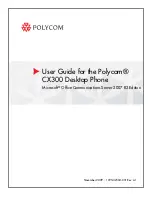
Settings
156
2. Tap options to configure settings:
USB debugging
:
when enabled, allows debugging when the phone is attached to a
PC by a USB cable.
Allow mock locations
: when enabled, apps can use mock location information
during debugging.
Select app to be debugged
: allows you to choose a development app for
debugging.
Wait for debugger
: allows you to choose how the phone and selected app respond
when the phone is connected to a debugger.
Input Options
Configure the user interface by setting the behavior for the way the screen behaves when using
applications or displaying data.
1. Press
>
and tap
Settings
>
Developer options
.
2. Tap the check box next to each option to enable:
Show touches
: Displays touch interactions on the screen.
Show pointer location
: Highlights the data that was touched on the screen.
Drawing Options
Configure options for updating the screen during development.
1. Press
>
and tap
Settings
>
Developer options
.
2. Tap the check box next to each option to enable:
Show layout boundaries
: Displays boundaries for clips, margins, etc.
Show GPU view updates
: Flashes views inside windows when drawn with the GPU.
Show screen updates
: Areas of the screen flash as they update.
Window animation scale
: Configure the scale for windows.
Transition animation scale
: Configure the scale for transitioning when using
animation.
Animator duration scale
: Configure the scale for animator duration.
Disable hardware overlay
: When enabled, the GPU is always used for screen
compositing.








































